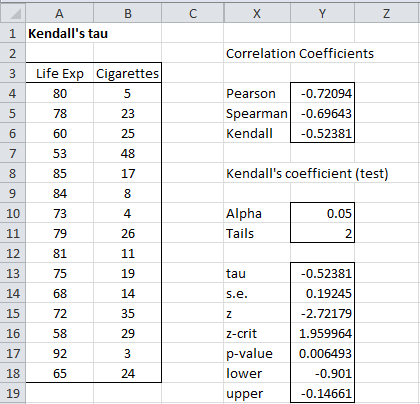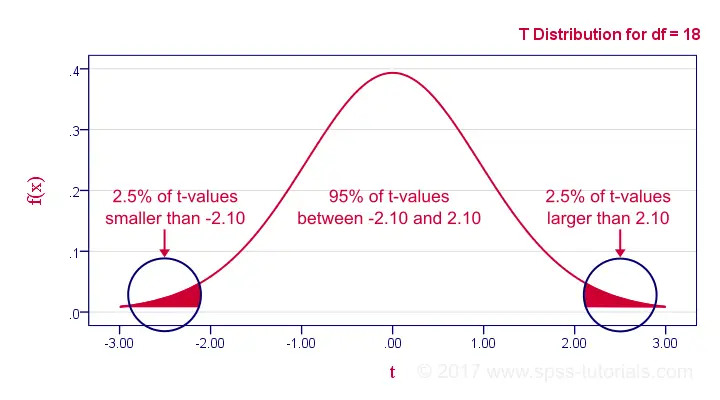- How Do You Calculate Pearson Correlation Coefficient In Excel
- Cached
- Calculate P Value For Pearson Correlation In Excel Spreadsheet
- Calculate P Value For Pearson Correlation In Excel Sheet
- Calculate P Value For Pearson Correlation In Excel
Pearson Correlation Coefficient, also known as Pearson's R or PCC is a measure of linear correlation between two variables X and Y giving values from -1 to +1. P value is used for testing statistical hypothesis. Use this calculator to find the p value based on the PCC.
If the p Value is less than 0.05, you can be at least 95% certain that the calculated correlation value was not a random event. The calculation in Excel for this example is performed as follows: p Value = 0.0008 =1-F.DIST (((7-2).0.0.9544^2)/ (1-0.9455^2),1,7-2,TRUE) The p Value of 0.0008 is much less than alpha (0.05).
See full list on educba.com. Jul 05, 2021 Step 7: The Excel will calculate the mean, variance, observations, Pearson correlation, hypothesized mean difference, t statistics, p-value, and more. P-value is easy to calculate and adapt in many different situations. It helps you to get the information you need without spending a lot of time or effort on it.
P Value from Pearson Correlation Coefficient Calculator
Pearson Correlation Coefficient, also known as Pearson's R or PCC is a measure of linear correlation between two variables X and Y giving values from -1 to +1. P value is used for testing statistical hypothesis. Use this calculator to find the p value based on the PCC.
Example
For r equal to 0.5 , n equal to 7 and significance level 0.01 p value for one tailed test is 0.1266 and for two tailed test is 0.2532.
Related Calculators:
Top Calculators
Popular Calculators
Top Categories
How Do You Calculate Pearson Correlation Coefficient In Excel
Calculate Correlation
1. Open the workbook that contains your data in Excel 2007.

2. Determine the cell addresses that contain the two ranges of data that you want to compare. For example, if your data is contained in the first 20 rows of columns 'A' and 'B,' then the two cell address ranges for your data are 'A1:A20' and 'B1:B20.'
3. Click a cell that you want to use to calculate the Pearson correlation coefficient 'r.'
4. Type '=PEARSON(A1:A20,B1:B20)' -- without the quotes -- in the cell. Substitute the addresses of your data ranges in place of these sample ranges.
5. Press 'Enter.' Excel calculates the Pearson correlation coefficient for your data range and displays it in the cell.
 Calculate P-Value
Calculate P-Value
6. Click a different cell that you want to use to calculate the p-value that is associated with your correlation.
7. Copy and paste the following formula into the cell:=TDIST((pearson_cell*sqrt(N-2)/sqrt(1-(pearson_cell*pearson_cell))), N, 2)The cell returns an error message; don't worry, you'll fix the formula to work with your data array in the next steps.
8. Click the formula bar to edit the formula that you just pasted. Type the address of the cell that contains your Pearson correlation formula in place of all three instances of 'pearson_cell' in the above example. For instance, if you calculated the Pearson correlation in cell 'A22,' then the formula looks like this:=TDIST((A22*sqrt(N-2)/sqrt(1-(A22*A22))), N, 2)


Cached
9. Type the number of observations that you have for each variable in place of each instance of 'N' in the formula. For instance, if you have 20 observations in each column, then the formula now looks like this:=TDIST((A22*sqrt(20-2)/sqrt(1-(A22*A22))), 20, 2)